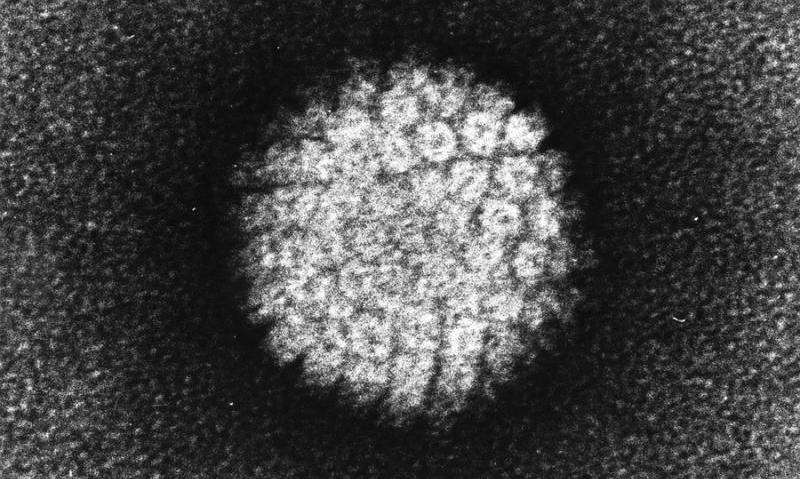The wrong track: How papillomaviruses trick the immune system


Specific antibodies protect us against viral infections—or do they? Researchers at the German Cancer Research Center (DKFZ) studied the immune response to papillomaviruses in mice and discovered a hitherto unknown mechanism by which the pathogens outwit the immune system: At the beginning of the infection cycle, they produce a longer version of a protein that surrounds the viral genome. The body produces antibodies against this protein, but they are not effective in fighting the pathogen.
The human immune system has a wide variety of defense strategies to protect the body against pathogens, one of which involves producing antibodies to fight viruses and bacteria. Over time, however, these pathogens have developed elaborate ways of escaping the immune system.
Scientists are already aware of some of these strategies. In human papillomaviruses (HPV), however, up until now they have only known about such strategies in innate, already present immunity and not in adaptive immunity, which does not develop until pathogens enter the body and is associated with the production of antibodies.
Frank Rösl and his co-workers from DKFZ under the supervision of Daniel Hasche have now discovered a new mechanism by which cutaneous papillomaviruses (specific to the skin) trick the immune system.
Certain cutaneous HPV, such as HPV5 and HPV8, occur as natural infections on the skin. They are not sexually transmitted, but are passed on from the mother to the newborn child. Thus, family members are usually colonized with the same HPV types. An infection normally goes unnoticed, because the body is able to overcome it. Depending on the individual status of a person’s immune system, their genetic predisposition, age, and other external factors such as UV radiation, however, certain cutaneous HPV types are able to stimulate cell division in their host cells. This leads to skin changes and in rare cases to development of a squamous cell carcinoma, also known as fair-skin cancer.
The experiments were conducted in a particular mouse species, Mastomys coucha, which, like humans, can become infected with cutaneous papillomaviruses shortly after birth and produce specific antibodies against the virus. In combination with UV radiation, infected animals are more likely to develop squamous cell cancer.
The animals’ immune system produces antibodies against the two viral proteins L1 and L2 that make up the virus particles, also called capsids. These antibodies can prevent the viruses from entering the host cells and thus neutralize the virus. However, the experiments carried out by the DKFZ scientists showed that besides the normal L1 protein, the viruses also produce a longer version. The latter is not able to actually take part in forming the viral capsid. Instead, it acts as a kind of bait against which the immune system directs its response and produces specific antibodies.
However, the scientists were able to demonstrate that these antibodies are not effective in fighting the papillomavirus. Instead of neutralizing the infectious pathogen through binding to L1, the antibodies merely bind the nonfunctional protein used as bait. While the immune system is busy producing these non-neutralizing antibodies, the virus can continue to replicate and spread throughout the body. It take several more months before neutralizing antibodies are produced that target the normal L1 protein and ultimately the infectious viruses themselves.
Source: Read Full Article